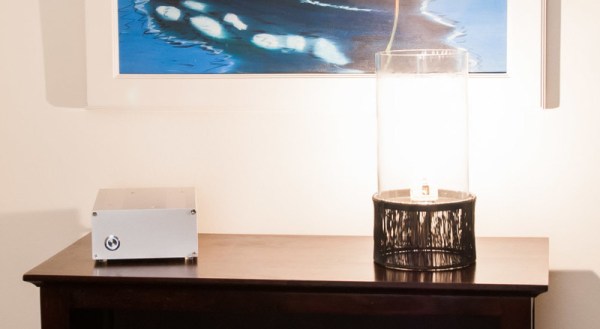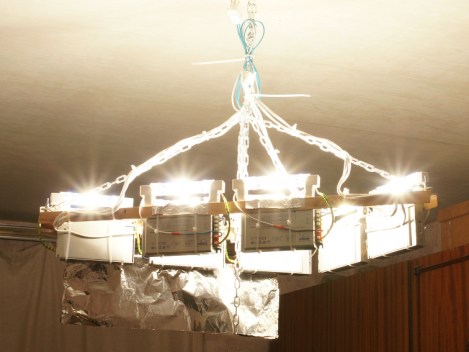As you know, winter is coming. For a lot of people this means that Seasonal Affective Disorder is beginning to set in. [Luke]’s mom already has a light therapy box. It’s one of those commercially available ones that uses fluorescent bulbs and leaves a lot to be desired in the full-spectrum light simulation department. [Luke] jumped on the opportunity to design a better one.
The standard of quality for light therapy units is a rating of 10,000 lux. While lux definitely matters, the rating is a misleading selling point when given on its own. One of the other important factors in mimicking the sun is the Color Rendering Index (CRI). CRI is basically a rating of the bulb’s ability to imitate the color reproduction of natural daylight. The ratings run from 0 to 100 but in reality, the highest-rated bulbs of any kind top out around 98.
For all the fluorescent bulb-bearing light therapy units out there, those bulbs have pretty low CRI ratings. [Luke]’s project page provides emission spectra graphs for a number of bulb types, and we can see how his choice of ceramic metal halide bulbs stacks up against fluorescent, incandescent, and LED bulbs. One of the few downsides to this type of bulb is that they have long startup times.
He ended up making two light therapy lamps, one of them directional and the other omni-directional. They both use ballast-controlled ceramic metal halide bulbs. The ballasts are necessary to provide the high starting voltage that these bulbs require. The omni-directional light is built into a large hurricane candle holder. A lamp holder is fixed into the base and wired to an external ballast box. The directional lamp is a self-contained unit, and [Luke] is happiest with this one. It’s flat and rugged so it can be placed on top of a bookcase and the light bounced off of the ceiling for pleasant, indirect coverage.
We’ve seen a couple of alarm-clock wakeup light builds here, and we’re thinking this would make an awesome mashup.











